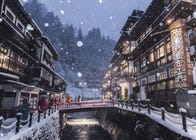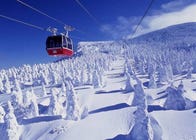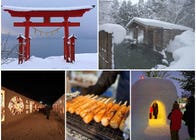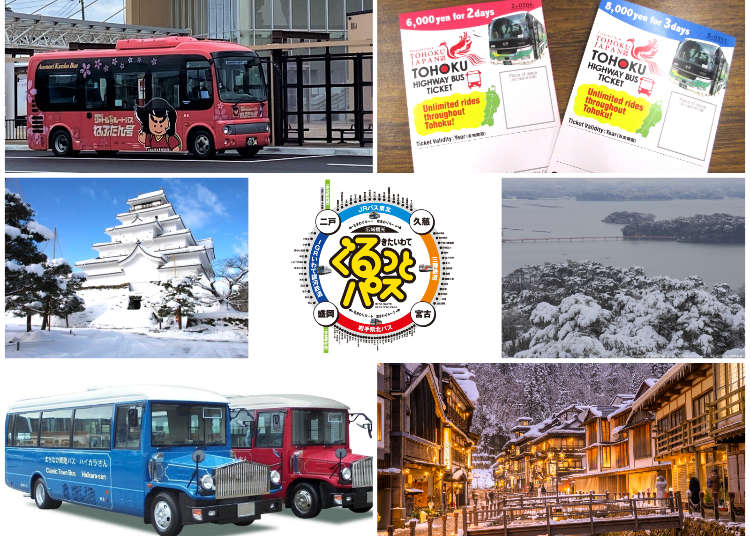
During winter, the snow-covered Tohoku region offers a range of activities like skiing, picturesque hot springs surrounded by snowy landscapes, and traditional snow festivals with historical charm.
Tohoku is well connected with efficient Shinkansen connections between Tokyo and its prefectures, and convenient access from Narita and Haneda airports, making it an ideal destination for winter travel in Japan. However, as the region is fairly large, it is recommended to use a travel pass for longer trips.
Our author, who proudly calls himself "The Writer Who Loves Tohoku the Most in Japan," has lived in Tohoku and will recommend travel passes that allow you to explore the region safely and affordably.
- Table of Contents
-
- Transportation Options for Traveling in Winter in Tohoku
- Make Your Winter Tohoku Tour Enjoyable with These 5 Recommended Travel Passes
- 1. Aomori Shuttle de Route Bus (Nebutan-go) All-You-Can-Ride Pass (Within Aomori City)
- 2. Sendai Marugoto Pass (Sendai, Matsushima, Yamadera, and More)
- 3. Kita-Iwate Gurutto Pass (Ninohe, Kuji, Morioka, Miyako)
- 4. Downtown Sightseeing Bus One-Day Free Ride Ticket (Aizu-Wakamatsu City)
- 5.Tohoku Highway Bus Ticket
Transportation Options for Traveling in Winter in Tohoku
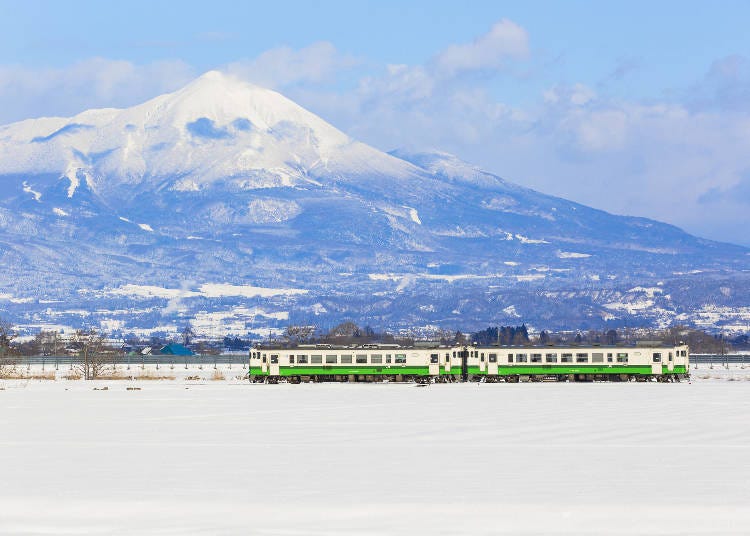
Tohoku is located in northern Honshu and consists of six prefectures: Aomori, Iwate, Akita, Miyagi, Yamagata, and Fukushima. Because it covers such an extensive area, it's essential to choose transportation methods best suited to your destination and the areas you plan to explore.
- Car: Rental cars can be great for getting around Tohoku, but it's important to be aware of local road conditions. The roads are often narrow, and passing can be challenging in some places, even during the green season. In winter, there is usually heavy snowfall with high moisture content, which can make driving difficult, and getting stuck is a possibility. If you're not used to driving on snowy roads, it's best to take a different transport mode.
- Train: Tohoku has good transportation connectivity via bullet train, including the Tohoku Shinkansen, Yamagata Shinkansen, and Akita Shinkansen. These trains are designed to operate well even in snowy weather, making them a reliable mode of transportation. However, keep in mind that local trains have less frequent schedules, so it is important to plan accordingly.
- Airplane: There are nine airports in the region, but limited routes within Tohoku mean infrequent departures. Plan flights carefully.
- Bus: Intercity buses connecting major cities and passes for flexible exploration within the region can be a cost-effective way to travel. Again, keep in mind that delays are more likely due to weather conditions, and some areas may have limited bus service, so be sure to check your route and travel conditions in advance.
Make Your Winter Tohoku Tour Enjoyable with These 5 Recommended Travel Passes
Tohoku has a vast railway network, but sometimes it can be inconvenient for travelers due to the considerable distance between stations and tourist destinations. In such cases, buses can be a great option for efficient travel.
Our writer, who is well-acquainted with Tohoku, shares the highlights of the region along with information on cost-effective travel passes.
1. Aomori Shuttle de Route Bus (Nebutan-go) All-You-Can-Ride Pass (Within Aomori City)
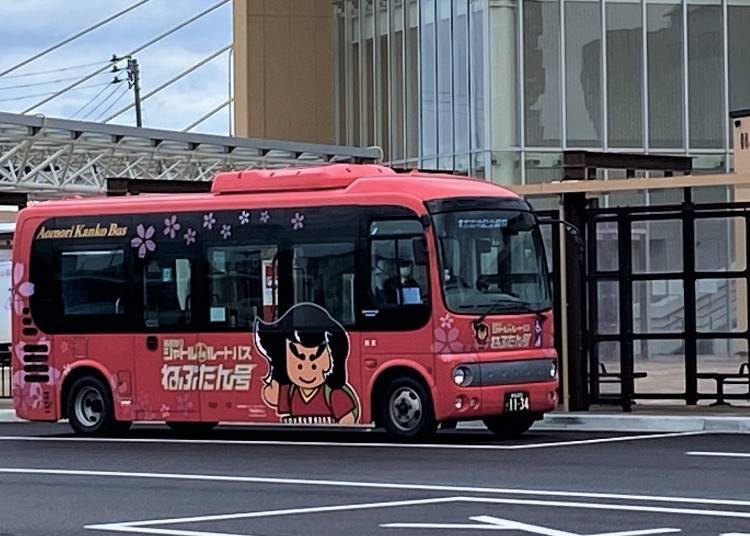
The All-You-Can-Ride Pass for the Aomori Shuttle de Route Bus (Nebutan-go) allows unlimited travel around Aomori city center and major tourist attractions.
Available in 1-day and 2-day options, the bus stops at key locations like Aomori Port Ferry Terminal, Prefectural Art Museum, and the Sannai-Maruyama Special Historical Site.
With a single bus fare costing 300 yen, the more you ride, the more cost-effective the becomes. It's highly recommended for those who want to explore the city itself.
Coverage Area: Aomori City
Cost:
1-day pass: adults 700 yen, children 350 yen
2-day pass: adults 800 yen, children 400 yen
Where to purchase:
Tickets can be purchased on board the Nebutan-go, at the Aomori City Tourist Exchange Information Center at the east exit of Aomori Station, the Aomori Tourist Information Center on the 2nd floor of Shin-Aomori Station, the ASPAM 1st floor information desk, Hotel Aomori, Art Hotel Aomori, and at Seven-Eleven's multi-copy machines.
Also Recommended: AOPASS 1-Day Ride Ticket
If you're planning a trip to Aomori City and its outskirts, the AOPASS 1-Day Ride Ticket can be a good option for you. This IC card-exclusive pass is available only on weekends (Saturdays, Sundays, and holidays), and during specific periods (August 13th to 15th, December 29th to January 3rd).
With the 1-day ticket, you can ride Nebutan-go, Aomori City buses, and Aomori City Loop buses as many times as you want on the day of purchase, while the 2-day ticket is valid for the day of purchase and the following day. This pass is ideal for exploring Aomori city and its outskirts, including destinations like Mt. Hakkoda and Asamushi Onsen.
Coverage Areas: Aomori City, Hakkoda, Asamushi Onsen, etc.
Cost:
1-day pass: adults 1,000 yen, children 500 yen
2-day pass: adults 1,500 yen, children 750 yen
Where to purchase:
AOPASS, Suica, and PASMO holders, please tell the bus driver that you wish to purchase an unlimited-ride ticket when you get off the bus.
If you do not have any of the above IC cards, please tell the bus driver you wish to purchase an AOPASS (2,000 yen) and the unlimited-ride pass you want when you get off the bus.
- Day 1: Aomori Station Front (Visit Auga Fresh Market and enjoy a fresh seafood breakfast) → Sannai-Maruyama Special Historical Site (Explore the historical settlement ruins) → Aspam (Lunchtime at Aomori Prefecture Tourist and Local Products Center Aspam) → Aomori Station Front (Tour Wa Rasse, Aomori City's cultural exchange facility for Nebuta, and the Aomori-Hakodate Ferry Memorial Ship "Hakkoda" to delve into Aomori's history and culture) → Overnight in Aomori City
- Day 2: Aomori Station Front → Hakkoda Ropeway (Participate in the Hakkoda Juhyo Snowshoe Tour) → Sannokura Onsen (Stay in a hot spring inn with therapeutic effects dating back to ancient times)
- Day 3: Sannokura Onsen → Aomori Station Front → Asamushi Aquarium (Highlight: Dolphin performance) → Asamushi Onsen (Hot spring with views of both the sea and mountains) → Overnight
- Day 4: Asamushi Onsen Station → Aomori Station Front → Shin-Aomori Station
Highlight: Sannai-Maruyama Special Historical Site
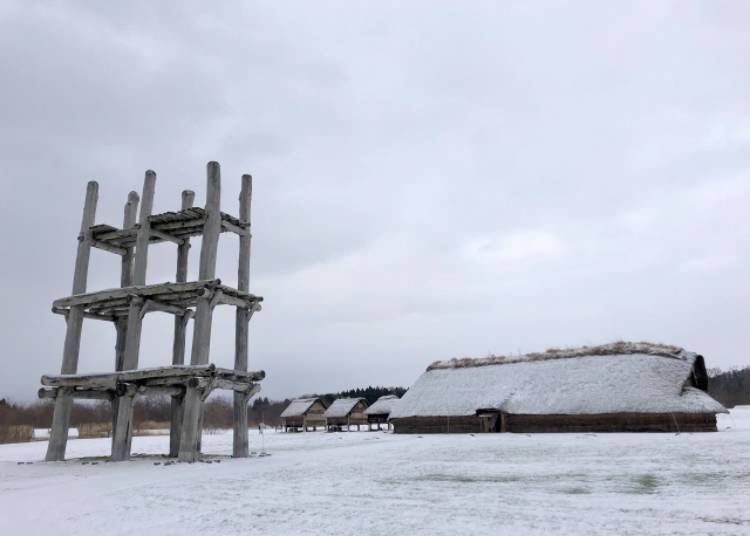
The Sannai-Maruyama Special Historical Site is a large settlement that dates back to around 5,900 to 4,200 years ago. It was discovered during a survey for the construction of a prefectural baseball stadium back in 1992. The site features reconstructed pit dwellings, raised-floor storehouses, and a three-tier symbolic pillar building.
You can find the Jomon Jiyukan Museum nearby, which exhibits materials and excavated items. The official website is available in English, Korean, and Chinese languages. You can access the website through tablets, where you can find explanations (in Japanese, English, Chinese, Korean, and Thai) provided through video, images, and audio about the excavation period and more.
-
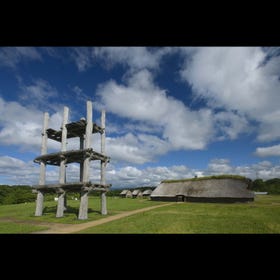
-
Address
305 Sannai Maruyama, Aomori City, Aomori Prefecture, 038-0031
View Map -
Nearest Station
Shin-aomori Station (Ou Line / Tohoku Shinkansen / Hokkaido Shinkansen)
15 minutes by bus
- Phone Number 017-766-8282
-
Address
305 Sannai Maruyama, Aomori City, Aomori Prefecture, 038-0031
2. Sendai Marugoto Pass (Sendai, Matsushima, Yamadera, and More)
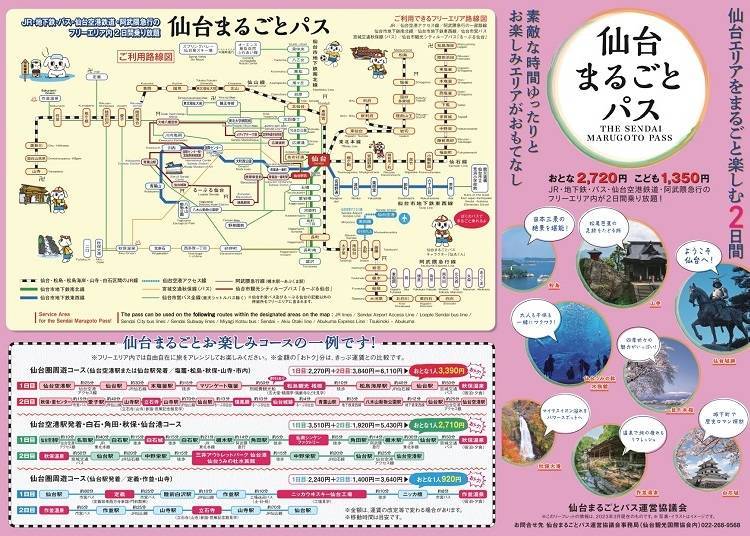
The Sendai Marugoto Pass is a two-day pass that allows unlimited travel on JR trains, subways, buses, Sendai Airport Transit, and Abukuma Express. It also comes with a coupon book for discounts at shops, tourist spots, and restaurants. The pass covers various transportation routes, enabling visits to places like Matsushima, Yamadera, Mitsui Outlet Park Sendai Port, and Akiu Onsen. There's also a digital option available.
Looking at the regular fares for a recommended two-day itinerary: Sendai Station Front to Sendai Umino-Mori Aquarium (round trip: 1,020 yen), Sendai Station Front to Matsushima Coast (round trip: 1,660 yen), Matsushima Coast to Sendai Airport (one way: 1,000 yen), totaling 3,680 yen. The Sendai Marugoto Pass offers savings of nearly 1,000 yen, making it cost-effective for exploring Sendai and nearby attractions like Matsushima Coast, Akiu Onsen, and Shiroishi.
Coverage Areas: Sendai, Matsushima, Matsushima-kaigan, Yamadera, Shiroishi
Cost: Adults 2,720 yen, children 1,350 yen
Where to purchase: The "Sendai Marugoto Pass" and "Sendai Marugoto Pass Wide" are available at Midori-no madoguchi (ticket window), reserved-seat ticket machines, major travel agencies, and Sendai Airport Station ticket vending machines at major JR East stations, as well as on the TOHOKU MaaS website. However, foreign languages are not supported, and the purchase procedure is a bit complicated. If you do not know how to purchase the pass, we recommend that you purchase it at the ticket counter.
Also Recommended: Sendai Area Pass
The Sendai Area Pass is a budget-friendly one-day pass for international tourists visiting Sendai, offering unlimited rides in a designated area. To buy it, tourists must hold a non-Japanese passport with a "Temporary Visitor" visa and be within 90 days of entering Japan. Passport checks at purchase ensure this deal is only for international visitors.
Coverage Areas: Sendai, Matsushima, Matsushima-kaigan, Yamadera, Shiroishi
Cost: Adults 1,320 yen, children 660 yen
Where to purchase: JR East Travel Service Center (2nd floor of JR Sendai Station)
- Day 1: Sightseeing in Sendai City (exploring places associated with the city's first lord, Date Masamune, Zuigan-ji Temple, Sendai Castle Ruins, Aoba Castle Historical Display Hall, the preserved remains of Sendai City Arahama Elementary School, a structure damaged during the Great East Japan Earthquake on March 11, 2011) → Overnight in Sendai
- Day 2: Sendai Station Front → Yagiyama Zoological Park (Exhibits about 130 animal species) → Yagiyama Benyland (Enjoy nearly 30 different attractions) → Overnight in Akiu Onsen, Sendai's hidden gem
- Day 3: Sendai Station Front → Sendai Umino-Mori Aquarium (Visit the show pool for dolphins and seals, capable of accommodating around 1,000 people, making it the largest in Tohoku) → Shopping at Mitsui Outlet Park Sendai Port → Overnight in Sendai City
- Day 4: Sendai → Matsushima Coast (A picturesque coast, one of Japan's Three Views) → Sendai Airport
Highlight: Matsushima Coast
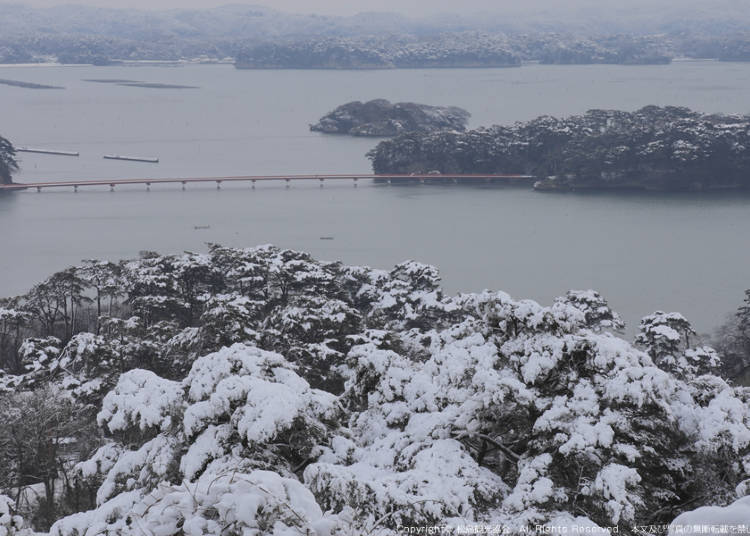
Matsushima Coast, known as one of Japan's "Three Most Scenic Places (Nihon Sankei)," is famous for its beautiful coastal scenery. About 5,000 years ago, rising seawater transformed hills into around 260 picturesque islands. It's an ideal spot for sightseeing cruises. This area also connects to Date Masamune, the first lord of Sendai, with several historical sites like temples related to his family. Winter adds a unique charm, as the snow-covered islands and structures offer a stunning, seasonal beauty.
-
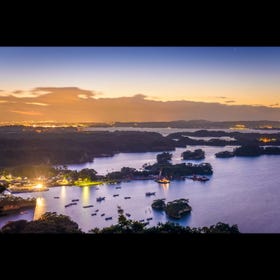
-
Address
98-1 Matsushima, Matsushima Town, Miyagi Prefecture, 981-0213
View Map -
Nearest Station
Matsushima Station (Tohoku Main Line)
15 minutes on foot
- Phone Number 022-354-2618
-
Address
98-1 Matsushima, Matsushima Town, Miyagi Prefecture, 981-0213
3. Kita-Iwate Gurutto Pass (Ninohe, Kuji, Morioka, Miyako)
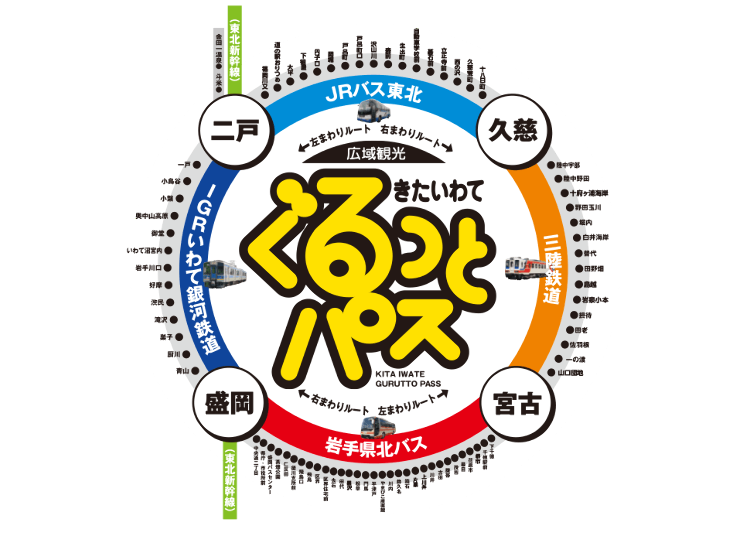
The Kita-Iwate Gurutto Pass is a 3-day, affordable pass for unlimited travel in one direction around Kita-Iwate, connecting various trains and buses. It includes travel on the IGR Iwate Galaxy Railway between Morioka and Kanazawa Onsen, JR Bus Tohoku from Ninohe to Kuji, Sanriku Railway from Kuji to Miyako, and Iwate Kita Bus from Miyako to Morioka. This pass is ideal for travelers looking to thoroughly explore Iwate, allowing them to hop on and off as much as they like along the way.
The recommended 3-day fare for the itinerary is: Morioka Station to Ninohe Station (2,000 yen), Ninohe Station to Kuji Station (2,410 yen), Kuji Station to Miyako Station (1,890 yen), Miyako Station to Morioka Station (1,980 yen), totaling 8,280 yen. ng the pass, travelers can save nearly 3,000 yen.
Coverage Area: Ninohe, Kuji, Morioka, Miyako
Cost: Adults 5,200 yen, children 2,600 yen
Where to purchase: Available online (in various languages)
Also Recommended: Den Den Mushi One-Day Free Ride Ticket
If you want to explore Morioka city conveniently, there is also the Den Den Mushi One-Day Free Ride Ticket, a handy pass for the city center's Dendenmushi sightseeing loop bus.
Coverage Area: Central Morioka
Cost: Adults 350 yen, children 180 yen
Where to purchase: Morioka Station Information Center, Morioka Bus Center Ticket Office, Plaza Odette
- Day 1: Morioka Station → Ninohe Station → Goshono Jomon Park (Exhibits Northeastern Tohoku's Jomon archaeological sites) → Arase Bridge (Beautiful concrete bridge) → Northern Chocolate Factory 2door (Tour the chocolate and specialty Nanbu Senbei manufacturing process) → Overnight in Ninohe City
- Day 2: Ninohe Station → Explore the ruins of Kunohe Castle and its surroundings → Kuji Station → Kuji Amber Museum → Miyako Station → Overnight in Miyako City
- Day 3: Sightseeing in Miyako City (Visit the beautiful Rias Coast at Jodogahama, Jodogahama Visitor Center, and Miyako City Fish and Vegetable Market) → Morioka Station → Overnight in Morioka City
- Day 4: Sightseeing in Morioka City (Explore landmarks such as Morioka Castle Ruins Park and Iwate Bank Red Brick Building) → Lunch at the renowned Wanko Soba restaurant "Azumaya Honten" → Cultural experience at "Morioka Tezukuri Mura" (Morioka Handicrafts Village)
Highlight: Jodogahama
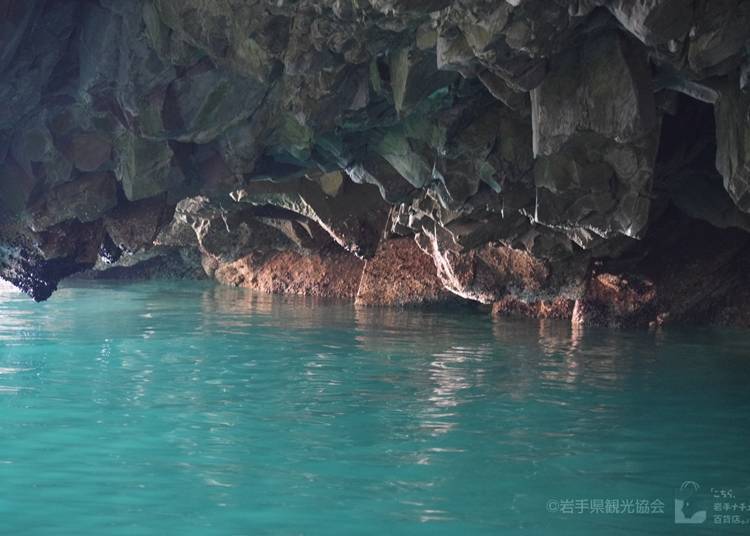
Jodogahama is a beautiful coastal area in Miyako, often called "Paradise" because of its stunning scenery. The coast features sharp, white rhyolite rocks in unique shapes, making for a beautiful view. It looks amazing in summer and even more special under winter snow. Visitors can enjoy boat tours to see the scenic coastline up close.
-
Jodogahama Beach浄土ヶ浜
- Address 32, Hitachihama-cho, Miyako City, Miyako 027-0001
4. Downtown Sightseeing Bus One-Day Free Ride Ticket (Aizu-Wakamatsu City)
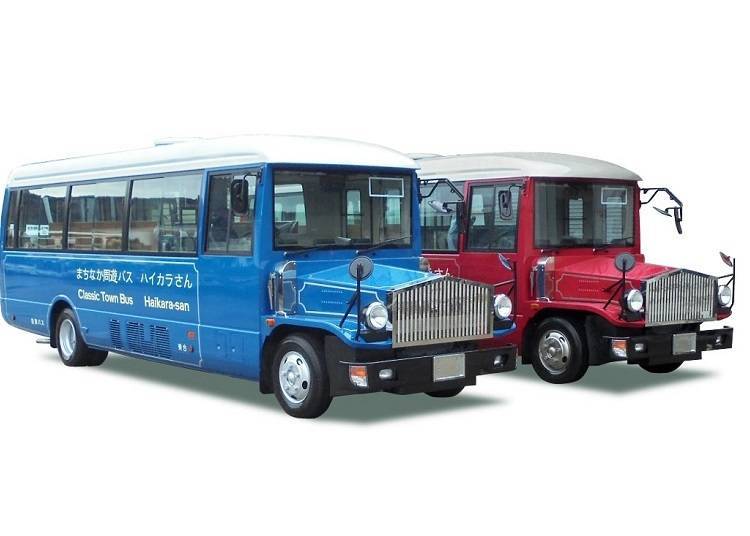
The Downtown Sightseeing Bus One-Day Free Ride Ticket offers unlimited travel on the Haikara-san and Akabe buses around Aizu-Wakamatsu City. These buses visit the same stops but travel in opposite directions. Using this ticket can also get you discounts at certain tourist spots.
There's an option to buy a ticket that includes entry to three major attractions plus unlimited bus rides for the day. With single trips costing 210 yen, riding the bus three times or more saves money, making it a great choice for exploring Aizu's historical sites.
Coverage Area: Aizu-Wakamatsu City
Cost: Adults 600 yen, children 300 yen
Where to purchase:Tickets are available at the Aizu Bus Station Information Counter, the bus terminal in front of Wakamatsu Station, and at the Aizu Samurai MaaS and Transfer Guide (Jorudan). For more information, please refer to the MaaS Digital Ticket Purchase Method (available only in Japanese):
Also Recommended: Aizu Gurutto Card
The Aizu Gurutto Card offers unlimited rides for two days on JR lines, Aizu Railway, Aizu Bus, Haikara-san, and Bandai Toto Bus within the entire Aizu area. Additionally, users can enjoy discounts and premium services at various tourist locations, accommodations, and restaurants. It's highly recommended for those who wish to explore not only Aizu-Wakamatsu but also the surrounding areas.
Coverage Area: Entire Aizu area
Cost: Adults 2,720 yen, children 1,360 yen
Where to purchase: The Aizu Gurutto Card is available in paper card version and digital version (TOHOKU MaaS or Samurai.MaaS) that can be used with a smartphone. The paper version can be received by exchanging an exchange ticket purchased at a convenience store terminal, travel agency counter, or other "exchange ticket sales point" for a main ticket at a "main ticket exchange point." For the digital version, please scan the QR code from the URL below, using the translation function of your mobile phone:
- Day 1: Explore Aizu-Wakamatsu City (Visit historic sites such as Tsuruga Castle, Aizu Bukeyashiki showcasing the Edo period's charm, Noguchi Hideyo Seishunkan, presenting the doctor's contribution to global healthcare, and the intriguing double-spiral staircase of Sazaedo Temple) → Overnight in Aizu-Wakamatsu City
(*To explore the city, consider using the convenient "Three Facilities Entry Ticket + Downtown Sightseeing Bus One-Day Free Ride Ticket" (Adults 1,630 yen/ Middle School Students 1,180 yen / Elementary School Students 890 yen) or the "New Three Facilities Entry Ticket + Downtown Sightseeing Bus One-Day Free Ride Ticket" (Adults 1,500 yen / Middle School Students 1,030 yen / Elementary School Students 660 yen), which include admission to various attractions.) - Day 2: Aizu-Wakamatsu → Ashinomaki Onsen → Overnight in Ashinomaki Onsen, known for its natural hot springs and scenic valleys
- Day 3: Ashinomaki Onsen → Sightseeing in Kitakata City (Explore Aizu Kitakata Ramen Village, where you can find various souvenirs from Kitakata, and enjoy sake tasting at Kitanohana Sakagura Brewery, along with a stroll through the historic streets)
- Day 4: Sightseeing around Lake Inawashiro (Visit Lake Inawashiro, the third-largest freshwater lake in Japan, and its surroundings, including Tenjin-hama Beach, Aquamarine Inawashiro Kingfishers Aquarium exhibiting around 800 species, and the Hideyo Noguchi Memorial Hall, commemorating a doctor who contributed to global healthcare) → Overnight near Lake Inawashiro
Highlights of Tsurugajo Castle
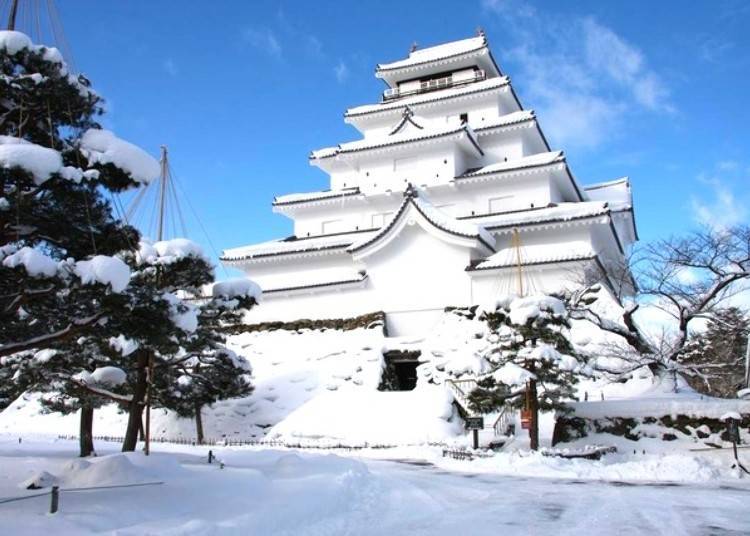
Tsurugajo Castle, first built in 1384 and originally known as Kurokawa Castle, was renamed by Lord Gamo Ujisato in 1593. It's famous for surviving a month-long siege during the Boshin War in 1868, proving its strength as a fortress. The castle is particularly striking in winter, when its red roof tiles contrast with the snow. These tiles are coated with an iron-rich glaze to prevent damage from the cold. For visitors interested in learning more, paid interpretation services are available through the International Exchange Association (phone: 0242-27-3703).
-
Tsuruga Castle鶴ヶ城
- Address Aizuwakamatsu-shi, Ote-cho 1-1, 965-0873
- Phone Number 0242-27-400
・Hours: 8:30 AM - 5 PM (last entry 4:30 PM)
・Admission: 730 yen for the castle tower, tea ceremony room, and Goyakuen
・Closed: Open daily
5.Tohoku Highway Bus Ticket
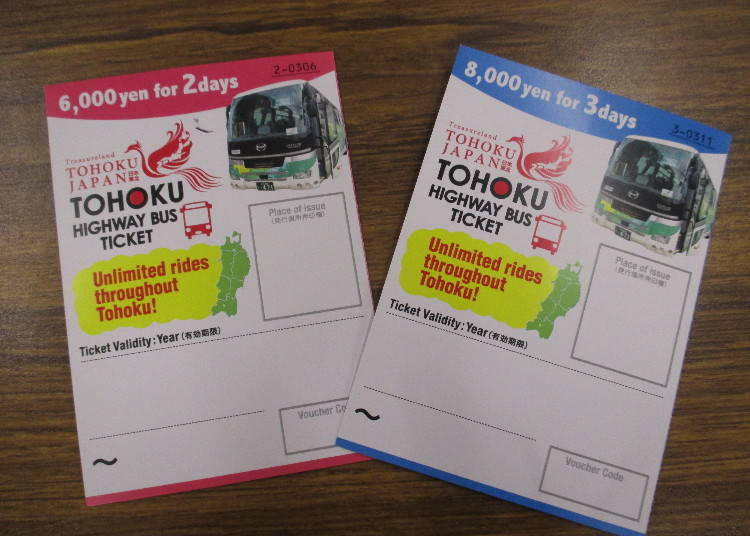
International tourists in Japan can take advantage of a great deal for traveling around the Tohoku region with a 2-day or 3-day pass for unlimited rides on highway buses. These passes, which you can buy online in English, cost 6,000 yen for two days and 8,000 yen for three days.
Traveling from Hirosaki in Aomori to Sendai in Miyagi by highway bus costs 5,700 yen one way, and although it's slower than the Shinkansen, it's much cheaper, especially if you plan to use the bus frequently. Look for buses that show they accept this pass. This option is perfect for those wanting to explore Tohoku's vast distances affordably.
Coverage Area: Entire Tohoku region
Cost:
2-day ticket 6,000 yen
3-day ticket 8,000 yen
Where to purchase: Available from the official webpage below
- Day 1: Yamagata Station → Risshaku-ji (Yamadera) Temple (Participate in a guided tour by the Kizahashi Association) → Zao Onsen (Explore attractions like Yamagata Sake Museum and tree-ice illumination) → Stay overnight in Zao Onsen
- Day 2: Zao Onsen Ski Resort (Join the Zao Central Highland Kanjiki Snow Hike and Night Cruiser for the illuminated ice corridor tour) → Stay overnight in Zao Onsen
- Day 3: Zao Onsen → Tendo Station (Visit Tendo City Shogi Museum, a museum showcasing the world's best shogi piece craftsmanship, located within the station) → Explore Ginzan Onsen → Stay overnight in Ginzan Onsen
- Day 4: Sendai (City sightseeing) *Refer to Sendai Marugoto Pass for details.
Highlight: Ginzan Onsen
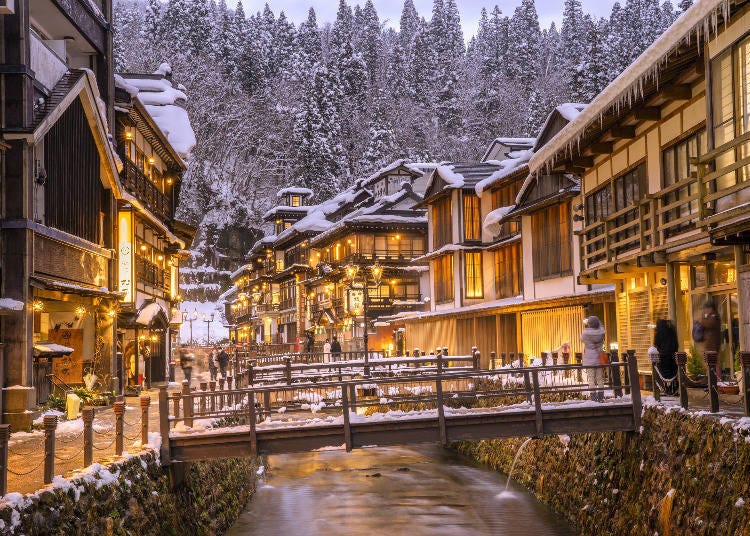
Ginzan Onsen is a charming hot spring town with traditional wooden inns along the Ginzan River. At night, gas lamps light up the streets, adding a nostalgic feel. In winter, these lamps and the snow create a magical atmosphere, turning the town into a winter wonderland. The inns feature colorful "kote-e" wall reliefs, and the sidewalks are decorated with snowflake patterns. Enjoy the unique beauty and atmosphere of Ginzan Onsen!
-
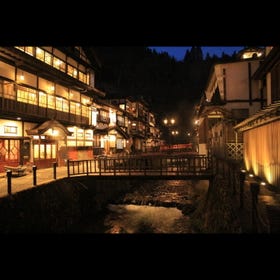
-
Address
Yamagata Prefecture Obanazawa City Yamagata Large Ginzan Shinhata, 999-4333
View Map -
Nearest Station
Oishida Station (Ou Line / Yamagata Shinkansen)
- Phone Number 0237-28-3933
-
Address
Yamagata Prefecture Obanazawa City Yamagata Large Ginzan Shinhata, 999-4333
Winter in Tohoku: Full with the Charm of Japan
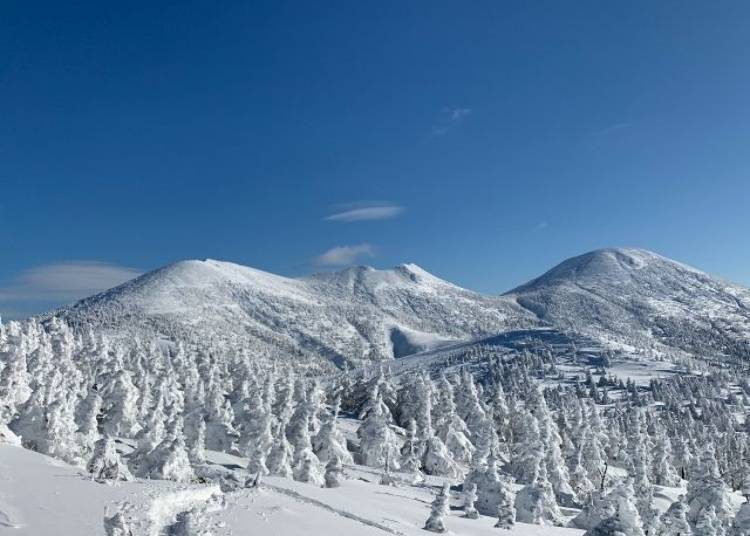
Within Tohoku's tourist spots, you'll find numerous places to delve into the region's history and culture. Local dishes including kiritanpo hot pot, beef tongue, and wanko soba are delicious, making it an ideal journey to fully experience Japan. Winter, blanketed in pristine white snow, offers a different charm from summer, with the monochromatic landscapes resembling ink paintings. When you go, be sure to take advantage of convenient passes to explore Tohoku, and immerse yourself in the traditions of Japan.
*Please note that the information in this article is accurate as of January 2024. For the latest updates, check official websites and sources.
Written by:
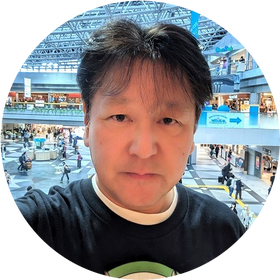
*Prices and options mentioned are subject to change.
*Unless stated otherwise, all prices include tax.
Limited time offer: 10% discount coupons available now!
Recommended places for you
-
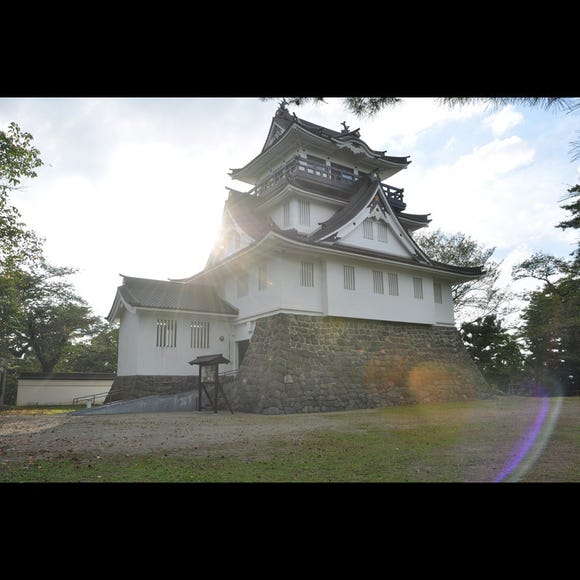
Yokote Park
Parks
Surrounding Areas Of Akita
-
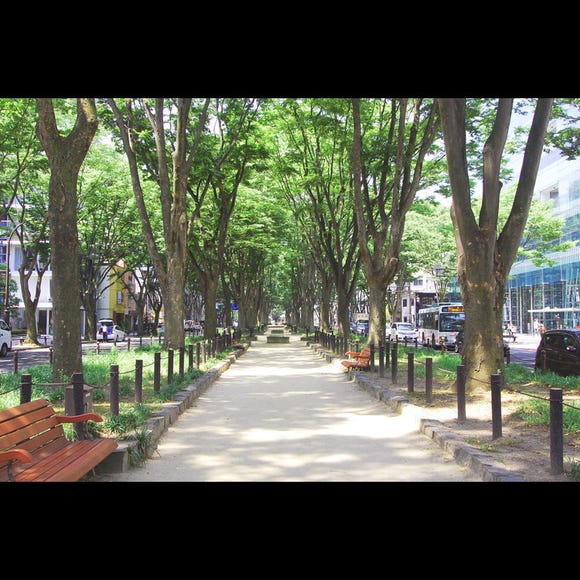
Jozenji Street
Other Townscapes
Sendai And Matsushima
-
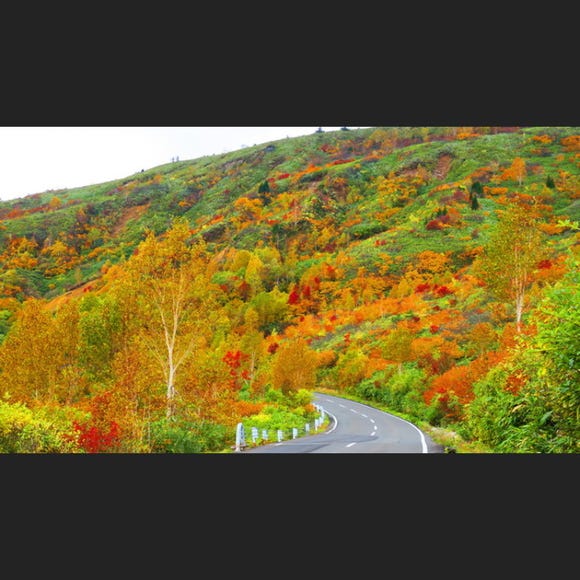
Hachimantai Aspite Line
Landscapes
Morioka, Hiraizumi And Hachimantai
-
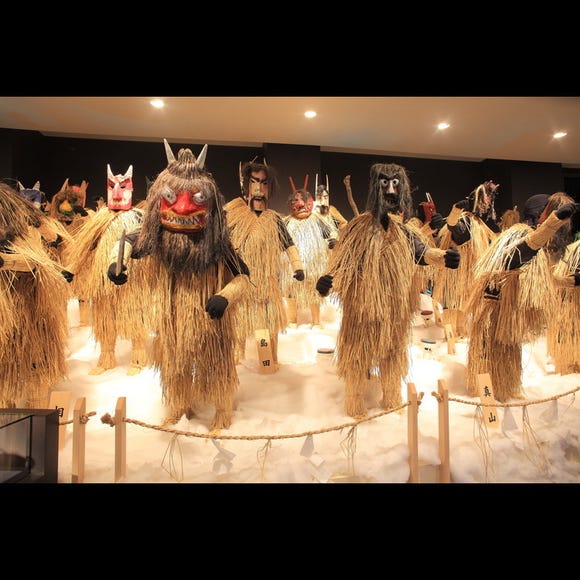
Namahage Museum
Other Museums
Surrounding Areas Of Akita
-
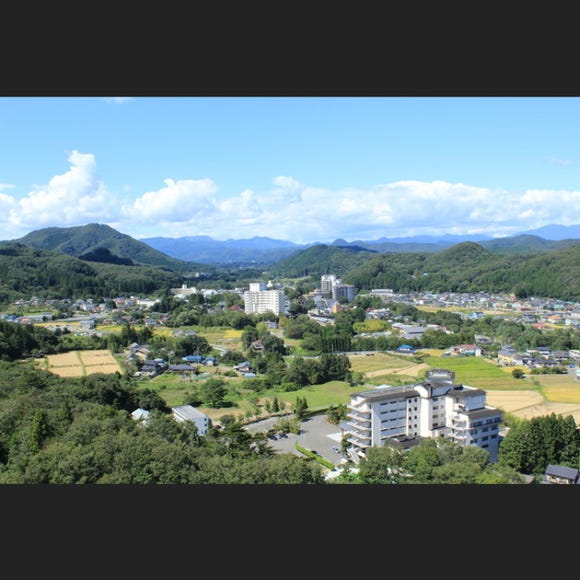
Akiu Onsen
Hot Springs (Onsen) & Bath Houses (Sento)
Sendai And Matsushima
-
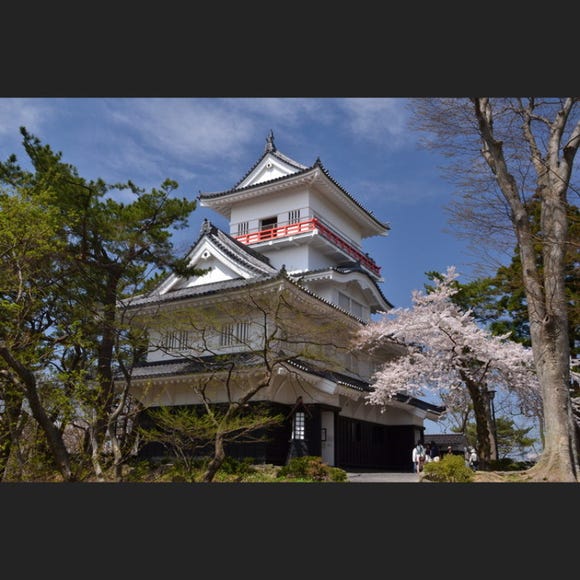
Senshu Park
Parks
Surrounding Areas Of Akita
-
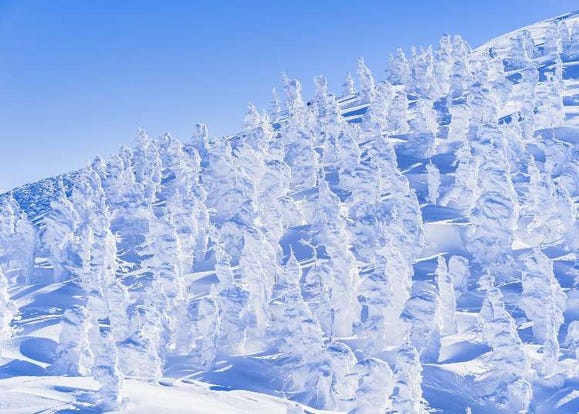
The Snow Monsters of Zao: Journey Among Yamagata’s Winter Wonders
-
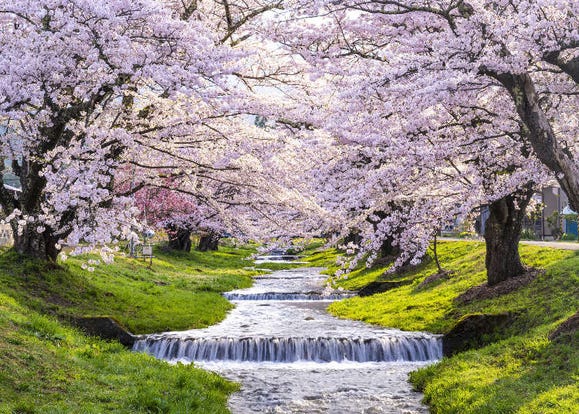
10 Dreamy Places in Fukushima to See the Cherry Blossoms
-
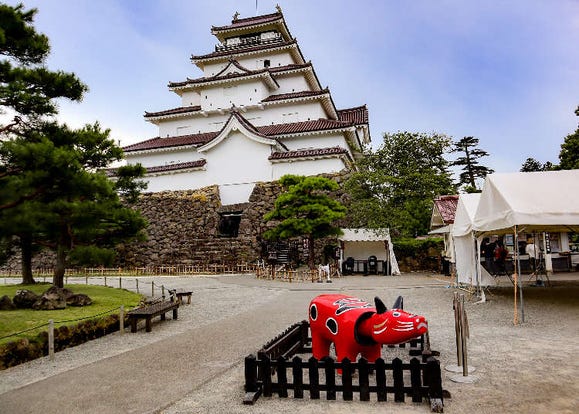
Aizu-Wakamatsu Guide (Fukushima): A Day in the City of Sake and Samurai
-
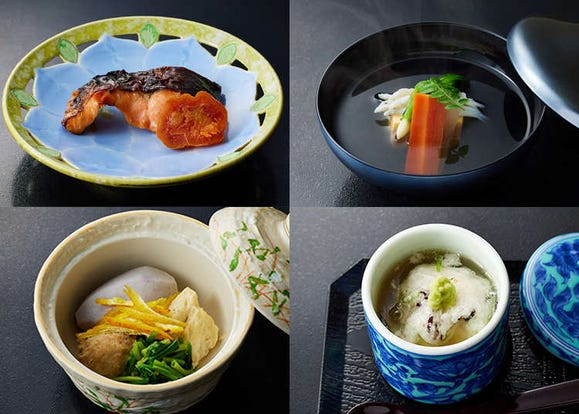
Japan’s Top Chefs Gather! New Cuisine Showcasing the Charms of Fukushima, a Treasure Trove of Produce
-
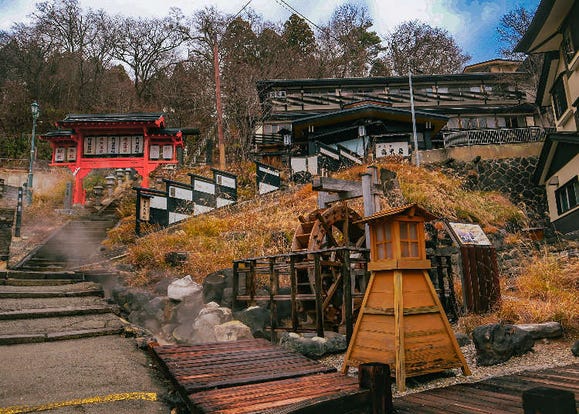
Plan Your Visit to Zao Onsen (Yamagata) - A Comprehensive Guide
-
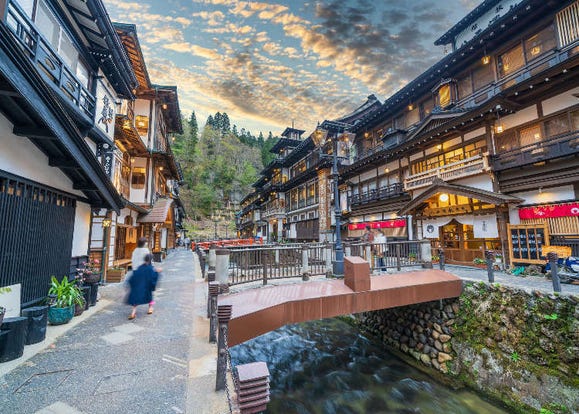
Dreamy Japan: 5 Scenic Onsen Towns in Yamagata Prefecture
-
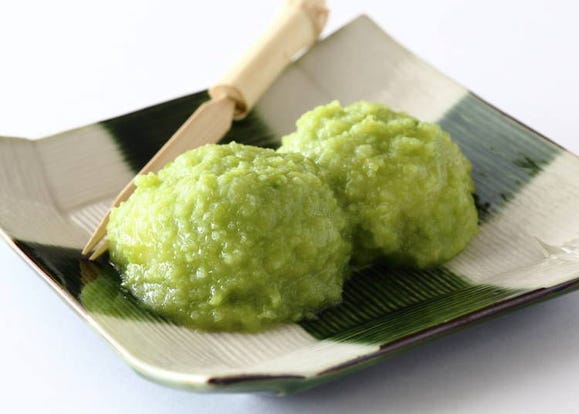
Japanese Foods List: 16 Crazy Tasty Japanese Tohoku Region Dishes You've Never Heard of
-
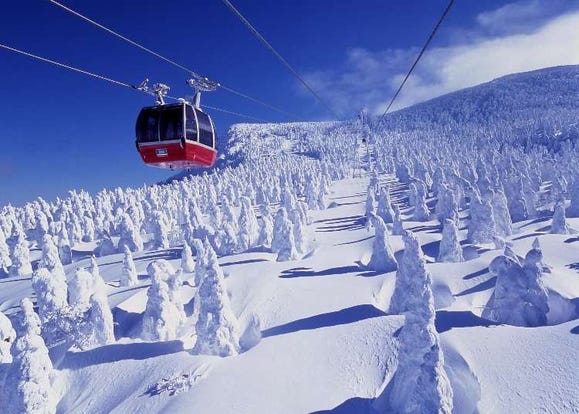
Top 14 Tohoku Ski Resorts & Snowboarding Areas in 2023-2024 (Access/Tickets/Hotels)
-
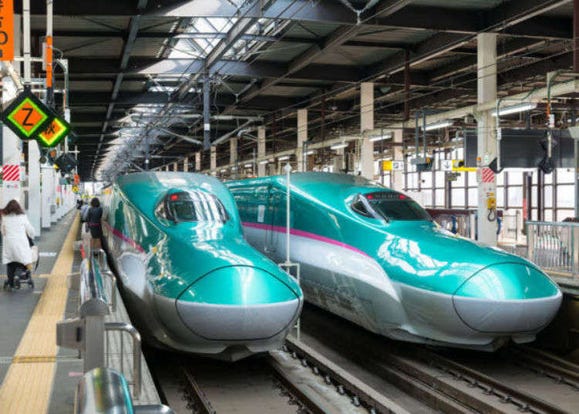
Tokyo to Sendai: Riding the Shinkansen to Japan's Stunning Spots
-

Scenic Railway Journeys: 4 Must-Ride Tohoku Tourist Trains to Enjoy Winter Roll By
-
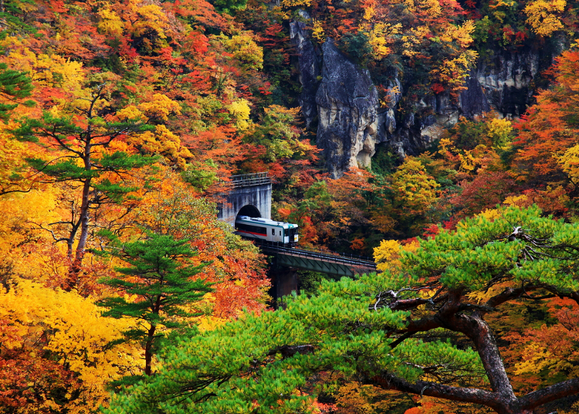
10 Must-Visit Places for Autumn Leaves in Tohoku: Naruko Gorge, Geibikei Gorge & More
-
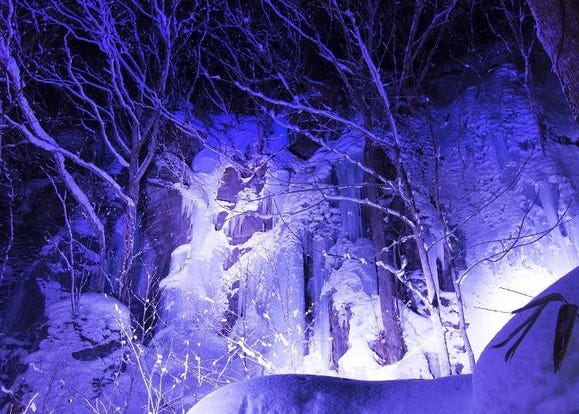
9 Things to Do in Aomori in Winter - Japan’s Deep Snow Country
















